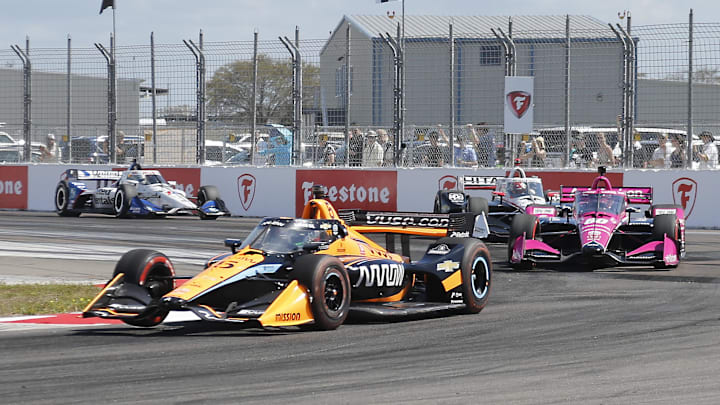IndyCar faced a bit of a conundrum to start the 2023 season. On one hand, the opener on the streets of St. Petersburg was one of the most exciting season openers the series has produced. On another, fans had to wait four more weeks before any more IndyCar action took place.
Fortunately, that action was well worth waiting for, as Texas Motor Speedway produced arguably the most exciting overall race in nearly a decade.
But it marked the third time in six years that IndyCar went into a mini-offseason following the season opener. In 2018, 2020, and 2023, a four-week break ensued following the opener (though we're willing to give the series a pass on a 2020 season that very well might not have happened).
Sure, suspense is built up after an exciting race, but is suspense really what anybody is looking for one race into a 17-race, six-month-long season?
IndyCar is coming off of its most viewed season since 2011. But unfortunately, the same problem exists.
One of the key things IndyCar must do in 2024 is capitalize on its popularity surge. While that surge hasn't been as drastic as that of Formula 1 in the United States and the series is still nowhere near as popular as NASCAR, things are trending in the right direction for what remains objectively the most competitive racing series in the world.
But in 2024, there are six weeks between the season's first two races. That's 42 days -- nearly a month and a half.
The 2024 season is scheduled to open up on Sunday, March 10 in St. Petersburg, and race two isn't scheduled to take place until Sunday, April 21 on the streets of Long Beach.
I fail to see how this resembles any kind of effort to capitalize on momentum. Even if the opener is exciting like it was in 2023, that excitement has the potential to fade over the course of that six-week period. If it isn't, the series runs the risk of "out of sight, out of mind" among casual fans who may have tuned in.
I get that it paid off in 2023, with Texas coming through with the race of the year and the season ultimately ending up with amazing viewership numbers, but Texas isn't even on the schedule in 2024, and there is no guarantee that it will ever come back. It's also hard -- if not straight up silly -- to argue that the long break was the reason for the jump.
Yes, IndyCar did add the Thermal Club $1 Million Challenge at Thermal Club on Sunday, March 24, but this is a non-points, exhibition race. Even aside from the fact that this race kind of comes across as somewhat of a gimmicky NASCAR All-Star-type event (though admittedly judgment should be reserved until afterward), there is almost a full month between that race and the next real race in Long Beach.
This is a series that has a five-week stretch of on-track action from May to June, a 15-day span featuring four races in July, and a 16-day stretch of the same from mid-August to September. You simply cannot argue that there is a need for a six-week break immediately after the season starts.
